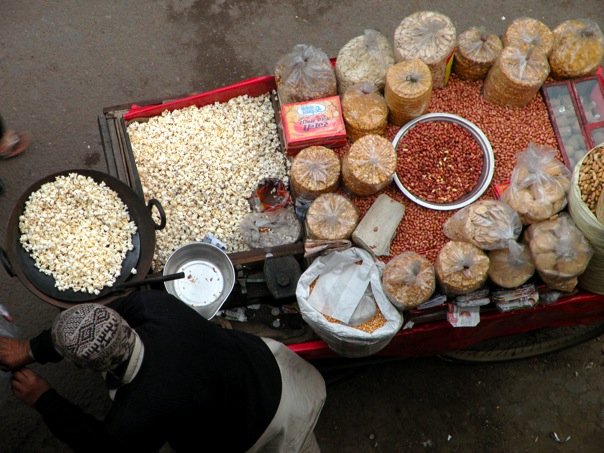|
So I have safely–if sweatily–been in India for four days now, and I am overwhelmed. Of course, there is the heat. Or rather the humidity. Our arrival brought the monsoons, which are refreshing once they fall, but for the day-long build-up, it is sweltering. I try not to think about it too much (or the multiple ice cold showers I crave, but alas, Delhi is in a severe water crisis), but it definitely defines our experience. What’s remarkable is that Delhites don’t sweat. Ever. Well, that’s not true. Today was record humidity, and a Kashmiri woman who runs a school we visited was whining about the heat. But I’m not sure she counts…after all, she’s from the Himalayas. This is all brutal to her. Aside from weather, I’m trying to soak up all I can, preferably from the back of a rickshaw where the breeze hits you and you’re side-by-side with sidewalk Delhi. We are staying in a posh subdivision of New Delhi. There are security guards, garbage collection, and running water. We’re a short walk from Khan Market where we can buy all the fancy salwar kameezes and gourmet coffee we want, and Lodi Gardens, an elaborate Muslim park where locals go to practice yoga and laugh therapy at daybreak. And if you look closely, parrots criss-cross the sky. I’m finding that the stereotypes of India–especially Delhi–are here somewhere, but this place is so much more than that. Yes, there are sacred cows roaming the streets and children beg for chapati and garbage piles up in empty lots. But there are also frangipani trees making the city smell beautiful, offerings for the nightly puja at temple being sold on the street, and locals who want so desperately for you to see that, beneath the undeniably grubby (and I’m being euphemistic) exterior, Delhi is so much more. As teachers here on a fulbright, we’re privy to cultured, wealthy Delhi…excellent meals (for $2!), dance performances, lectures by professors. But today we did venture into a Bengali slum to visit a non-profit school. A remarkable place that I’m still processing, it’s name, “Katha Kazhana,” apparently means something like hidden garden or hidden treasure, and it truly is. I can’t describe the streets outside of this school…the Cape Flats and Alexandra Township in South Africa don’t even compare. But in the midst of squalor, this school is a glimmer of hope. Most of the kids only speak Hindi and Bangla, so we didn’t get to interact much with them, but the teachers left quite an impression. Once I process the day, I’ll write more about it. In the first few days here, I keep coming back to one of the first lines of Midnight’s Children, when Saleem insists that he must quickly tell his story–so clearly an allegory for post-independence India–to fight the impending meaningless. He must make meaning out of the experiment that is his life, and the experiment that is democratic India. The ubuntu and the hope that struck me so in South Africa is not as readily accessible here. As Neeti, one of our companions here in Delhi said, “India needs another Gandhi…we need a miracle.”
0 Comments
Leave a Reply. |
AboutWhile living in Mexico, I joked that speaking Spanish forced me to be far more Zen about life: Since I could only speak in the present tense, I was forced to just live in that present tense. Archives
October 2023
Categories
All
photosLike what you see? That's mostly Ross Freshwater. Check out my talented partner-in-life's photo gallery. |


 RSS Feed
RSS Feed